By Arnold Blumberg
Although it suffered, like all combatants, from the costly stalemate and horrendous casualties of trench warfare during World War I, Italy never used tanks during that conflict. The mountainous terrain that dominated the front along which Italy and the Austro-Hungarian Empire fought each other was unsuited for such vehicles, and none saw action during the war in the Italian theater. Nevertheless, the use of this military innovation on the Western Front did not go unnoticed by the Italian Army.
From September 1916 through the end of the war, Major Alfredo Bennicelli, an Italian officer serving in France, kept his government informed of the use of tanks by the British and French, thus fueling an interest in the new weapon within the Italian General Staff. During the war, at Bennicelli’s urging, the Italians ordered a number of Schneider and Renault FT17 tanks from France in order to explore the possibility of forming their own armored force. The result was the country’s first experimental tank unit, the Reparto Speciale Dimarcia Carri d’Assalto, or Special Detachment of Assault Cars, created in the summer of 1918 from the 60 available French machines still operational. Soon afterward the Italians started manufacturing their own Renault FT17s, known as the Fiat 3000, under license.
Entering service in 1921, the Fiat 3000 weighed 5.5 tons, had a top speed of 15 miles per hour, and carried two machine guns. As the only Italian tank built for many years, by default it formed the basis of the country’s initial armored doctrine. Its sole purpose was the close support of the infantry, such as breaking down barbed wire obstacles and cleaning out enemy machine-gun nests so the foot soldiers could advance. The tanks were not initially organized to fight in concentrated units. They were parceled out to the infantry commands to be used as circumstances warranted.
As more Fiat 3000s became available, the first tank unit in the service, the company-size Reparto Carri Armati (Tank Detachment), was formed in 1923 and expanded to a regiment, the Reggimento Carri Armati, or Tank Regiment, in 1927. It comprised five companies, each containing 20 Fiat 3000s and 100 men.

During the early 1920s, Italian armored doctrine was evolving, although not straying far from its roots as an infantry support element. Colonel Enrico Maltese, chief of the Tank Detachment, formulated the early ideas about the proper use of tanks. While still advocating that they be firmly tethered to the slow-moving infantry, in 1924 he did recommend the development of self-propelled artillery, as well as suggesting the use of tanks of different sizes— heavy, medium, and light—for different combat missions.
Between 1925 and 1928, Maltese wrote about tanks acting as scouts for the cavalry, reducing antitank defenses, and their deployment in the initial assault phases of an attack. What was absent from his commentaries was any mention of tank versus tank combat and how to conduct it. The constricted nature of the Italian terrain and the predominant mindset among commanders that infantry and artillery were the primary weapons of land warfare before and after World War I, made it highly unlikely that the Italian General Staff thought much about offensive mobile warfare. Thus, the rather passive and defensive armored doctrine emerged in the 1920s. It was not until the 1930s that this began to change with the advent of Italy’s newfound territorial ambitions.
In 1933, Benito Mussolini, Italy’s Fascist dictator, declared that his nation was going to become “a warrior state” and forge an army with which to reconstitute and maintain a new “Roman Empire” encompassing the Mediterranean, the Balkans, and northeastern Africa. What Il Duce needed was an army that could go on the offensive with tank forces and deliver speedy and decisive victories. What he had was an army high command that was not confident in the merits of motorization, let alone mechanization. This reluctance would retard the growth of a viable armored doctrine and the weapons to implement it right up to the time Italy participated in World War II.
Throughout the 1930s, the senior Italian army leaders debated the worth of motorization for the army. When it was finally adopted, it was only applied to the moving of men, supplies, and equipment prior to battle, but not using transport assets in actual combat. Having disposed of that problem, the high command deferred any final judgment on mobile battlefield operations. There were, however, some forward-thinking officers who stressed the need for an aggressive armored doctrine. One such person was Colonel Sebastino Visconti Prasca, who in 1934 published La Guerra Decisiva, which called for armored units aided by artillery and air power, although still only acting in a supporting role, to break the enemy’s front, allowing friendly infantry and cavalry to pour through the gap created.
The L3/33 was Cheap and Allowed for Quick Production, it also Served as the Basis for Experimenting with Variants Like Flamethrower and Bridge Layer Models.
However, an instrument to achieve the desired mobile battlefield results as envisioned by Prasca was lacking. In 1933, the main Italian armored vehicle was the Carro Veloce CV33, or Fast Tank, later renamed the Carro Armato L3/33. A version of the 1929 British Carden Lloyd Mark V tank, it weighed three tons and was powered by a gasoline engine with a top speed of nine miles per hour. Its crew of two manned two Fiat 6.5mm machine guns fitted in the front of the hull. Its 13.5mm riveted armor plating at the front and rear was complemented by side armor of 8.5mm and 6mm of armor on the top and undercarriage. It could travel up to about 90 miles without refueling.
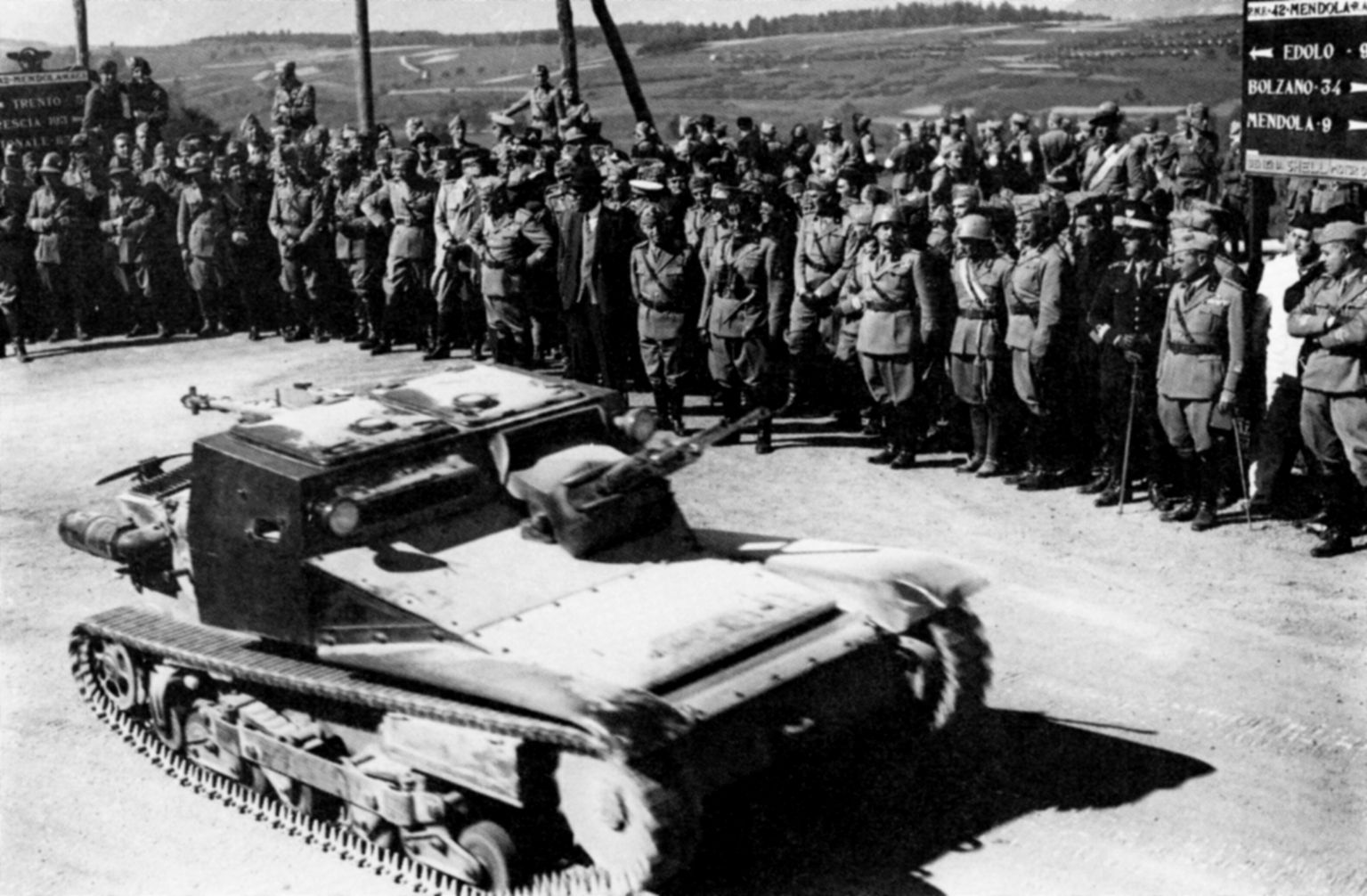
Cheap to build, the L3/33 design allowed for large numbers to be manufactured and put into service quickly. It also was the basis for experimenting with variants like flamethrower and bridge layer models. In 1935, it was upgraded in the form of the CV35 (later the Carro Armato L3/35), with two hull-mounted Breda 8mm machine guns, a little more armor plating, and a cross-county speed of 26 miles per hour. It was powered by a Fiat-Spa CV3 four-cylinder diesel, liquid-cooled 43 horsepower engine. Essentially tankettes due to their comparatively small size, both CV series—the 500 used in the 1935 Ethiopian War and 120 in the Spanish Civil War—proved vulnerable to close-quarters combat and enemy artillery, antitank weapons, and tanks.
The events in Spain in 1936-1937 had convinced the Italian authorities that a better tank had to be developed, but a number of major problems stood in the way. First, over 1,800 L3 types had been built (over 2,500 by 1941) since 1931. The vast number and low cost of the model made the government reluctant to move to another tank type. Second, lacking many raw materials such as iron, oil, and steel, Italy’s industrial base was too weak to sustain the manufacture of a large number of quality armored fighting vehicles, let alone maintain them in the field, even if such a design were present.
At its peak, the county’s tank producers, the automobile manufacturer Fiat and the ship- building company Ansaldo, could produce no more than 150 tanks a month. Further, much of the nation’s war production resources went to the pride of the nation’s armed forces, the Navy, or to the Air Force, which was a Fascist Party creation. The Army got what was left. The artillery branch was given priority in men and materiel, leaving the relatively new armored force to make do with what remained of the yearly Army appropriations.
Regardless of these problems, it was apparent to Rome by 1938 that a new and more powerful tank had to be designed and built. A new machine, the M11/39, the M standing for Medio or Medium, had been in the works for few years. It was built to be a breakthrough tank in support of attacking infantry and the mainstay of the two Italian armored brigades that existed in 1937. In reality an upgraded L3, it weighed 11 tons and had a rear-installed Fiat SPA 8T V-8 liquid-cooled 43 horsepower diesel engine which allowed it to travel at 21 miles per hour with a range of 124 miles. Armed with one low-velocity 37mm Vickers-Terni cannon placed in the right front hull, with only a minimal traverse up and down, and two Breda Model 38 machine guns, it was shielded by only 30mm of riveted plate armor. Sporting a high profile, standing seven feet, four inches high, the M11 was quickly spotted and so poorly protected that it was easy prey to any Allied tank or antitank weapon it faced. Like the L3, it had no radio, a poor suspension system, and was mechanically unreliable. The M11 did not enter service until 1939, but it was quickly determined that it would only serve as an interim tank until a more powerful weapon could be developed.
With new, more potent armored fighting vehicles expected in the late 1930s, Italian armor doctrine continued to mature. In 1938, General Edoardo Quarra, commander of the Tank Regiment from 1933 to 1936, urged the use of tanks en masse with artillery and infantry support to both break the enemy’s line and exploit that penetration. In 1937, General Carlo di Simone, chief of the 2nd Armored Brigade, advocated the addition of more truck- borne or mechanized infantry to the armored unit. He also suggested the attachment of motorized artillery and antitank weapons and ready air support. He stopped short of calling for the creation of an armored division since the absence at that time of a medium or heavy tank precluded such a formation from having the punch it needed.
If General Simone was wary of forming full armored divisions, his ideas did spur the Italian Army to embrace mechanization, which would greatly impact its future armor doctrine. In late 1938, General Alberto Pariani introduced the concept of guerra di rapido corso (high-speed mobile warfare). It announced a new doctrine, which put the tank, used en masse, at the heart of all offensive operations. Infantry and artillery were to act as support for the tanks and not vice versa. The exploitation of a breakthrough in enemy lines became a key role for armor.

As progressive as it was, the new doctrine failed to address the issue of tank versus tank combat. Nevertheless, the new policy created a single Corpo d’Armata Corazzato (Armored Corps) made up of two armored and two motorized infantry divisions. A tank worthy of the new theory was needed. The proposed M13/40 seemed to provide the solution.
Favorably Compared to the Venerable German Mark IV Panzer, the P40 Never Saw Service During the War Due to Manufacturing Delays.
The M13/40 medium tank had its inception in the desire to replace the hull-mounted 37mm cannon on the M11/39 with a higher velocity 47mm Austrian Bohler gun housed in a rotating turret. Experimentation began in 1938, but suffered numerous setbacks. It was then decided to make a variant of the M11/39. A revolving turret with the 47mm gun was fitted onto a chassis that was almost identical to the one used for the M11/39.
Armor protection was not increased, but for better protection of the four-man crew steel plates were bolted to a steel frame. The M11/39 engine, suspension, and transmission were used in the new model, which, due to the added weight, made the M13/40 sluggish. Its top speed was no more than 19 miles per hour on the road and 11 cross-county. Its height, width, and length were a little larger than the M11’s. Each tank was fitted with a radio, and the 47mm gun proved to be comparable to the two-pounder used by the British. The new tank did not see action until 1940, and by the end of its production run in 1942 over 800 had been produced.
With the arrival of the M13/40 expected, the Italian Army decided to create armored divisions. These new formations were to contain one tank regiment and motorized infantry regiment supported by two groups of artillery, a company of antitank guns and two batteries of antiaircraft guns. Italy’s three armored divisions entered World War II in June 1940 with a complement of 7,500 officers and men, 184 tanks (the majority L3/35s), and 24 75mm field guns each.
Even before the M13/40 was deployed, the Italians started working on a heavy tank design, the Carro Armato P40. The 26-ton vehicle had a diesel engine providing a top speed of 16 miles per hour. Its 75mm, turret-mounted gun was very effective, but for antipersonnel defense there was only one 8mm Breda co-axial machine gun. The crew of four was surrounded by 50-60mm of armor plate at the front, 40mm on the sides and rear, and 20mm on the underside. Favorably compared to the venerable German Mark IV panzer, the P40 never saw service during the war due to manufacturing delays.
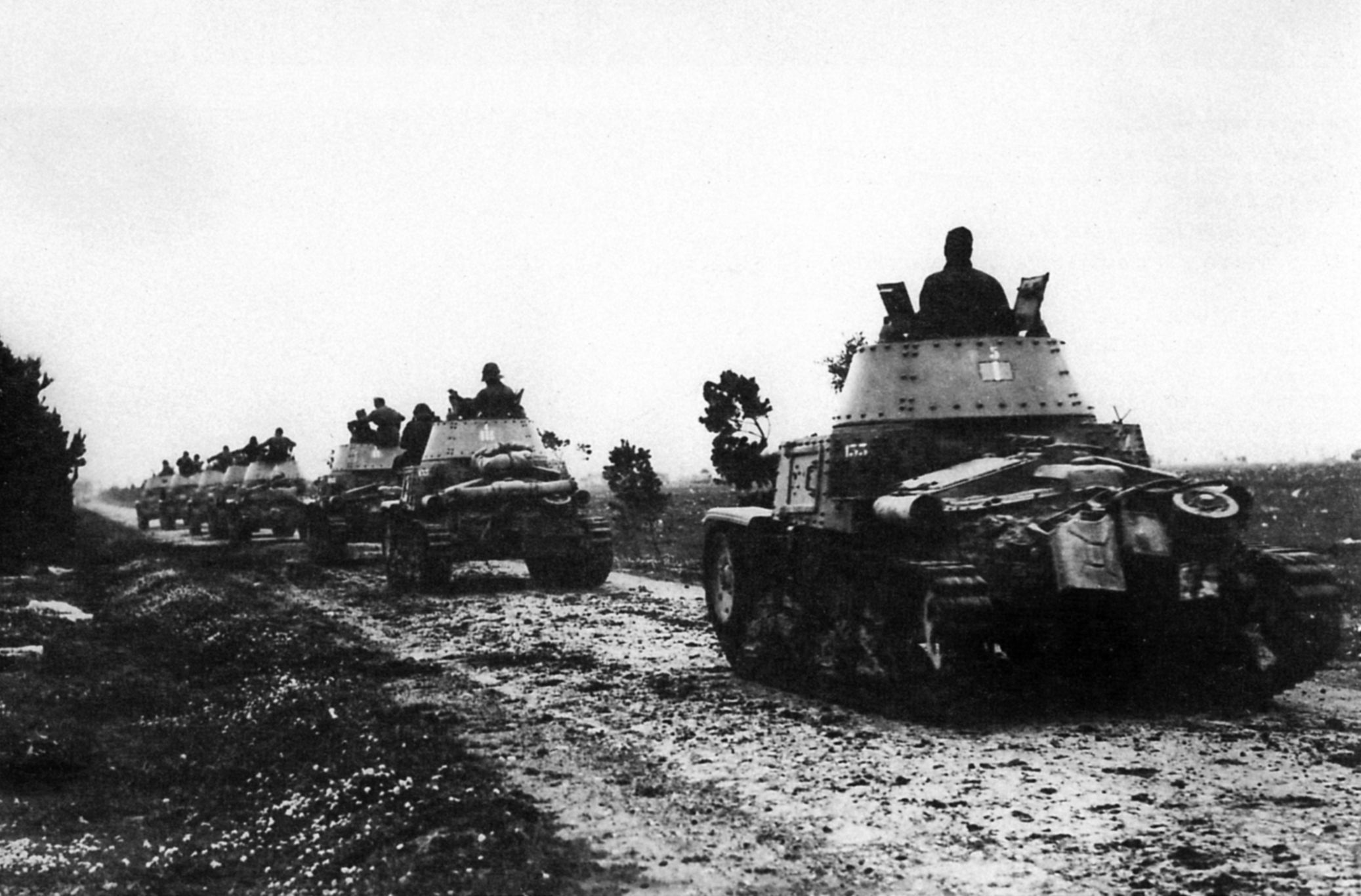
In March 1943, the Army decided to end production of all its medium series tanks. Their poor performance since 1940 convinced the military that the best way to fight a tank was with an antitank gun, not another tank. This shift in tactics was reinforced by the presence of a formidable self-propelled gun, the Semovente da 75/18 Su Scafo M41, in the Italian arsenal. First making its appearance in North Africa in mid-1942, the Semovente was based on the German Sturmgeschutze III infantry assault self-propelled gun and manufactured by the Ansaldo Company. Using an M13/40 tank chassis, a short 75mm howitzer in a ball mount was fitted to the front of a low superstructure. The model’s early trials proved it was reliable and easy to maintain. Ninety were ready for service by February 1941, with another 120 slated for production.
The new self-propelled gun perfectly suited the Army’s longtime belief that artillery was the best antitank weapon. It also could act as mobile artillery, which would be used to create holes in enemy lines to be exploited by the infantry and tanks. Further, it fit well with the Army’s artillery doctrine, fuoco da manovra (maneuvered fire), which called for the employment of massed antitank guns and field artillery fire close to the front.
The Semovente was manned by a crew of three: a driver, loader/radio operator, and commander/gunner. In almost all dimensions it was identical to the M13/40, except it was two feet lower in height, making it a more difficult target to spot. Its superstructure, frontal, and side armor was 25mm thick, while the mantlet was 50mm, and the top a thin 9mm. It carried 44 howitzer shells and proved to be a threat to Allied armor in the battles in North Africa. First used in small groups in direct support of armor and infantry, by late 1942 batteries of up to 16 vehicles were being employed for both support and independent missions.
In late 1942, the Semovente was upgraded by using an M42 tank chassis. About 200 of these were produced. Soon after, a new model carrying a 105/25 su Scafo M43 howitzer entered service. Built by Ansaldo, armor protection was 50mm all around. This was the most formidable armored fighting vehicle fielded by the Italians during the war. Thirty of them entered service before Italy left the conflict.
The armored fighting vehicles of the Italian Army during World War II have remained somewhat obscure. Their overall performance during the conflict must be assessed as less than spectacular.
Arnold Blumberg has conducted extensive research into armored fighting vehicles of World War II. He resides in Baltimore.
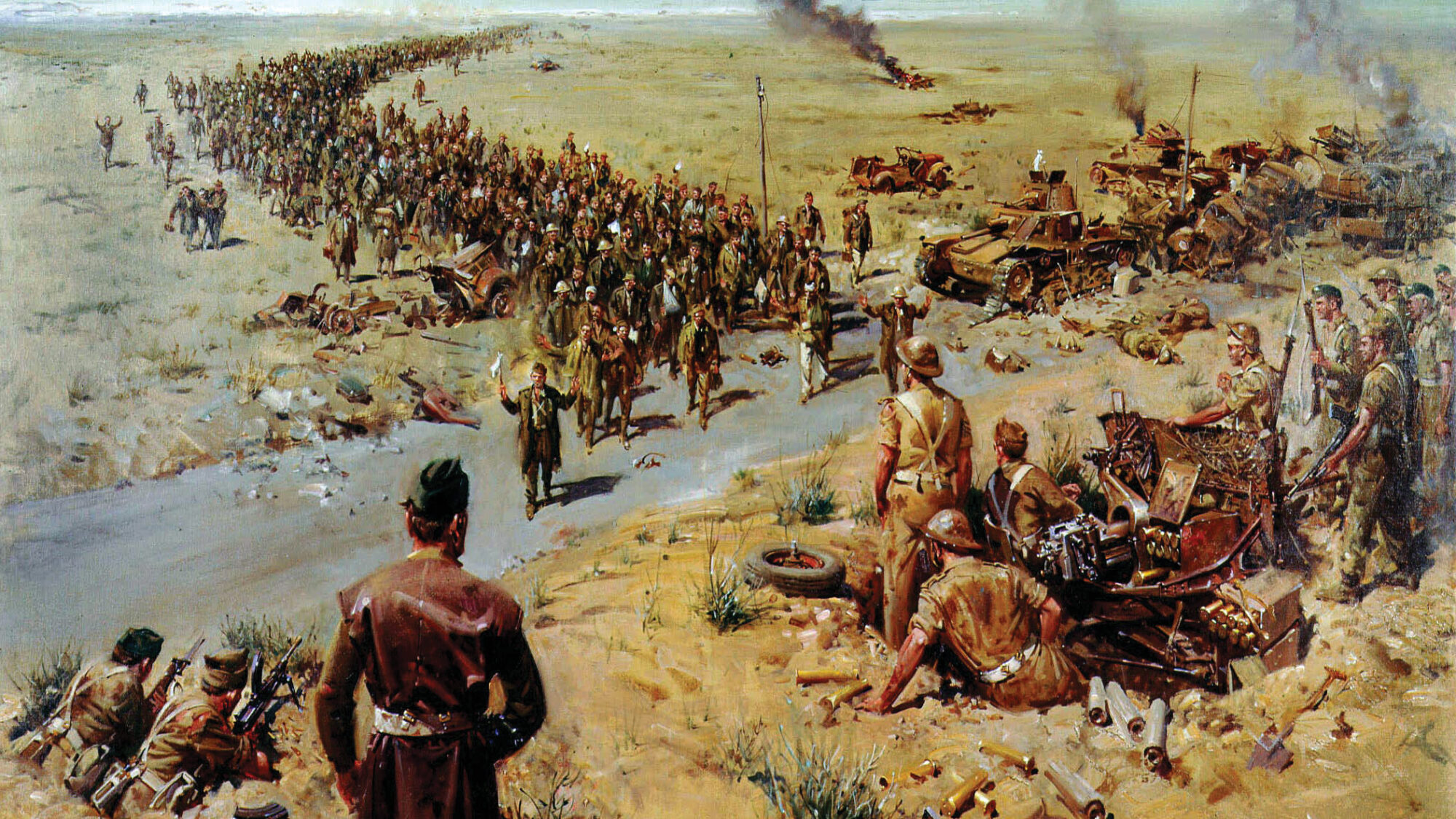
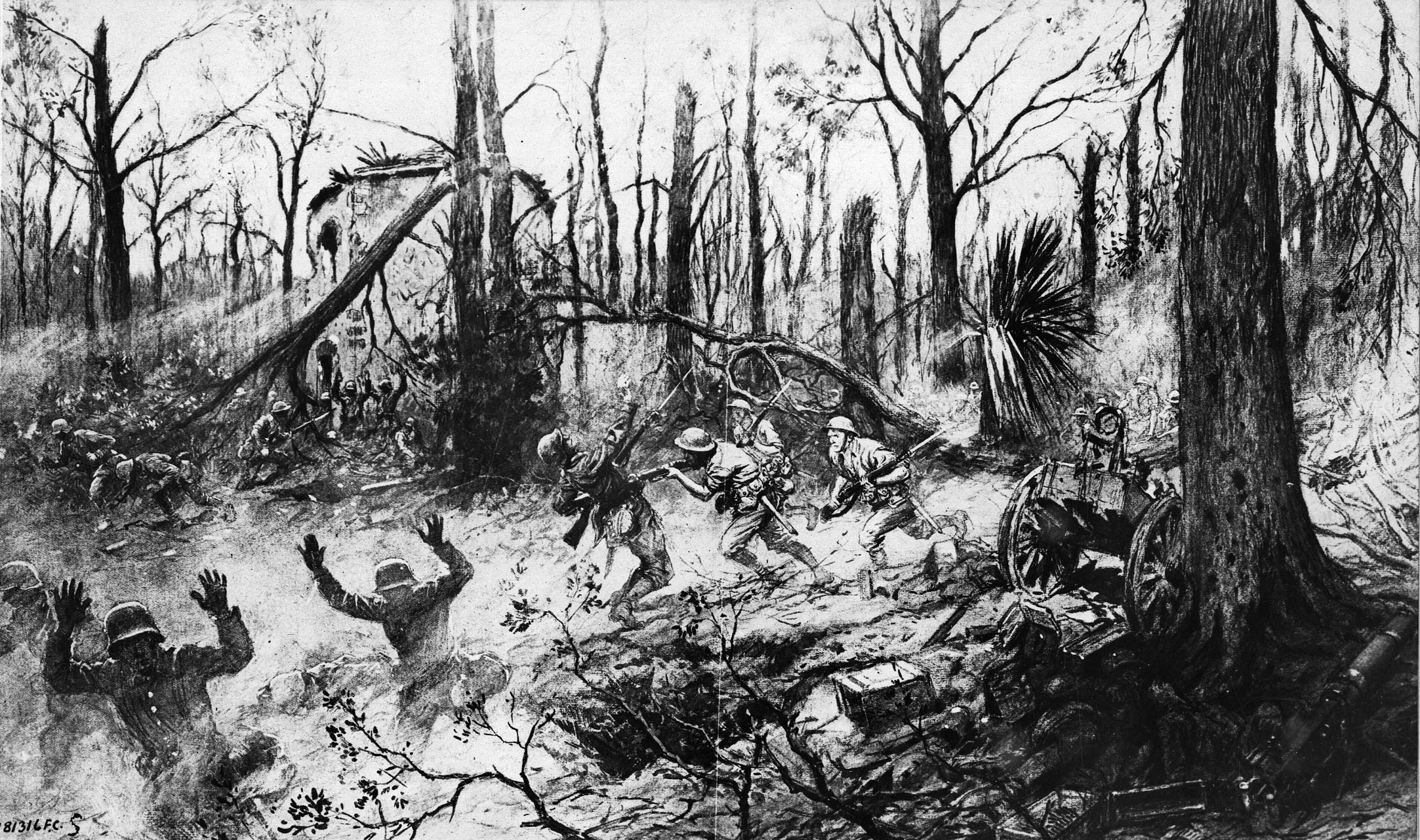
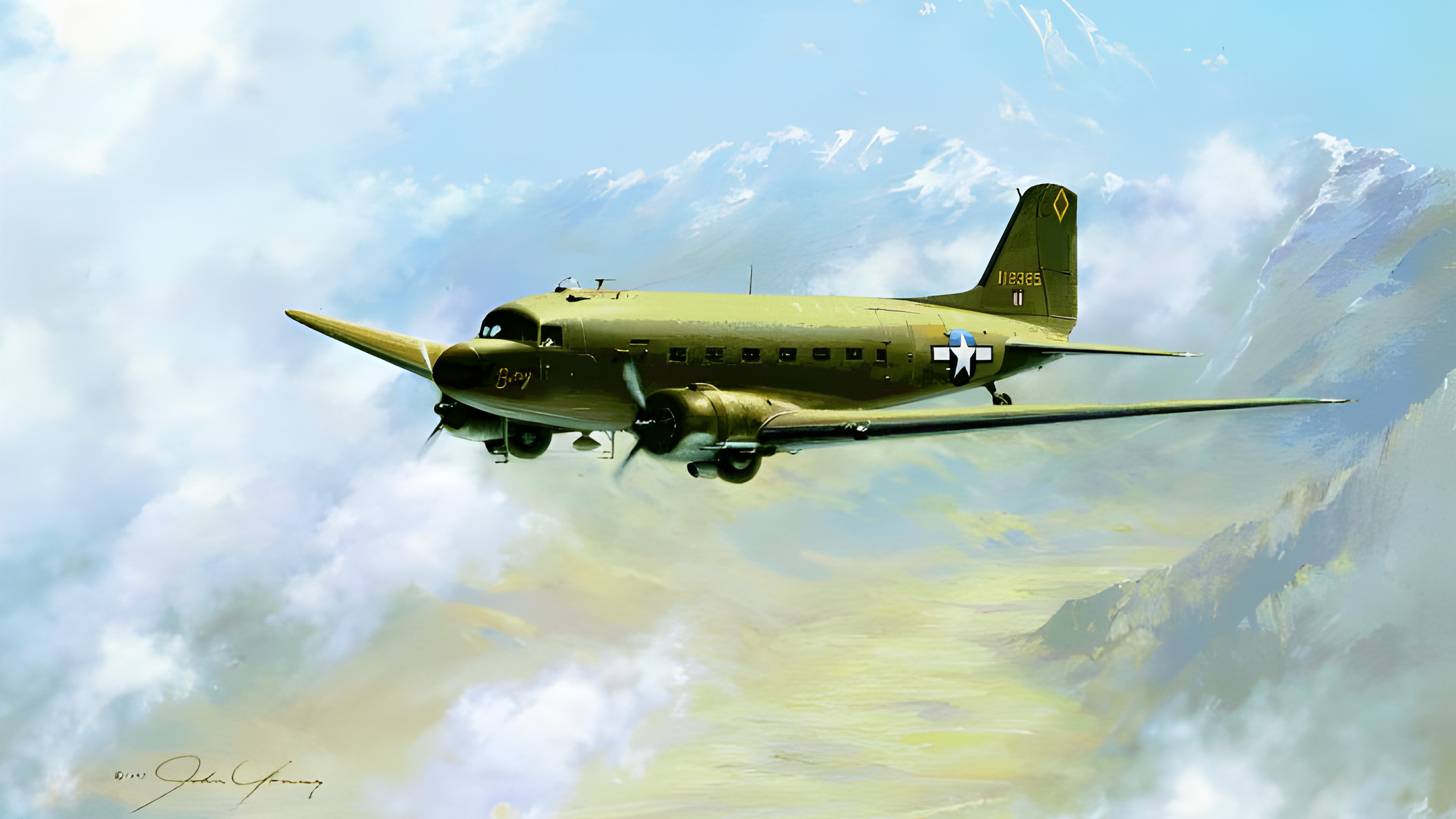
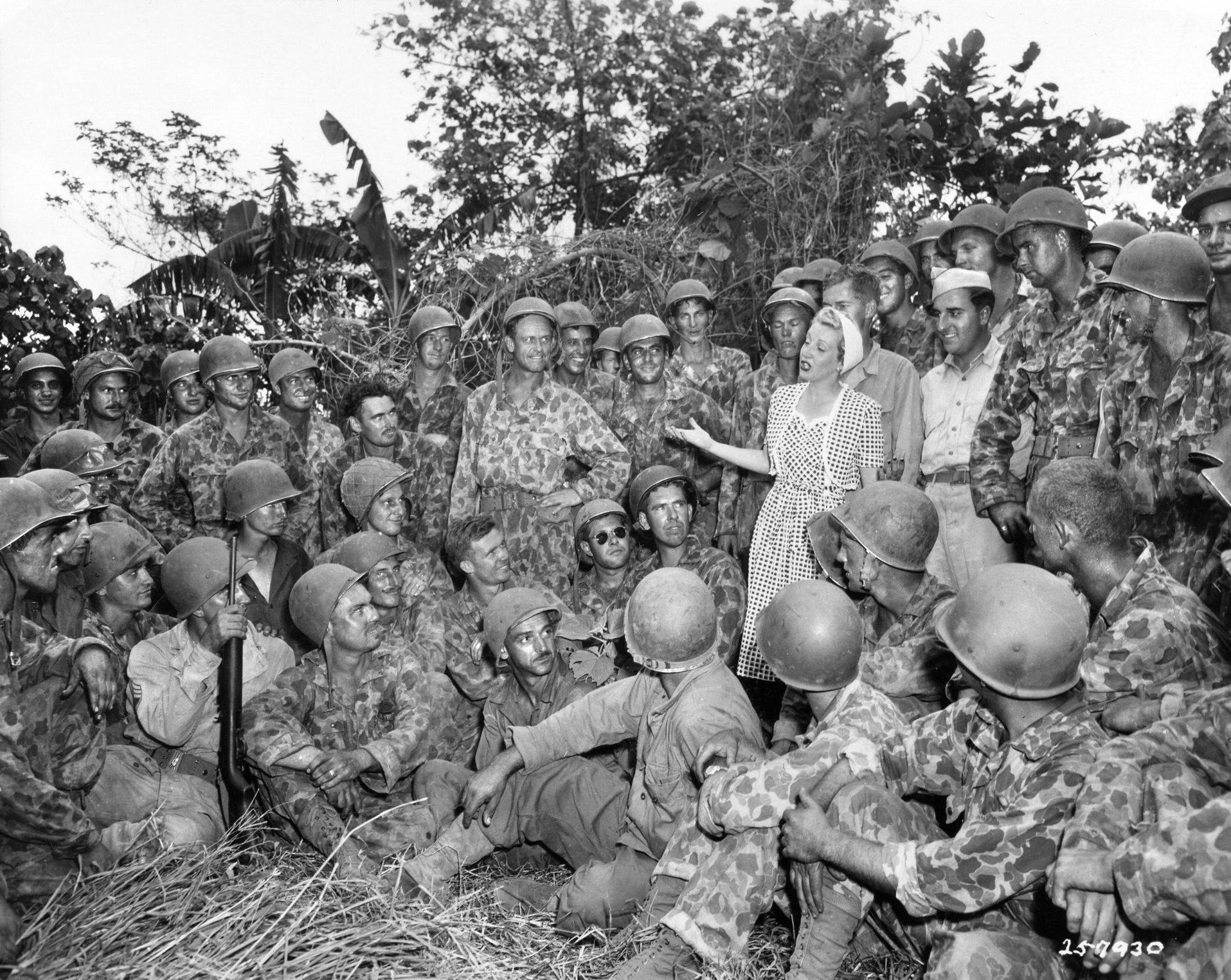
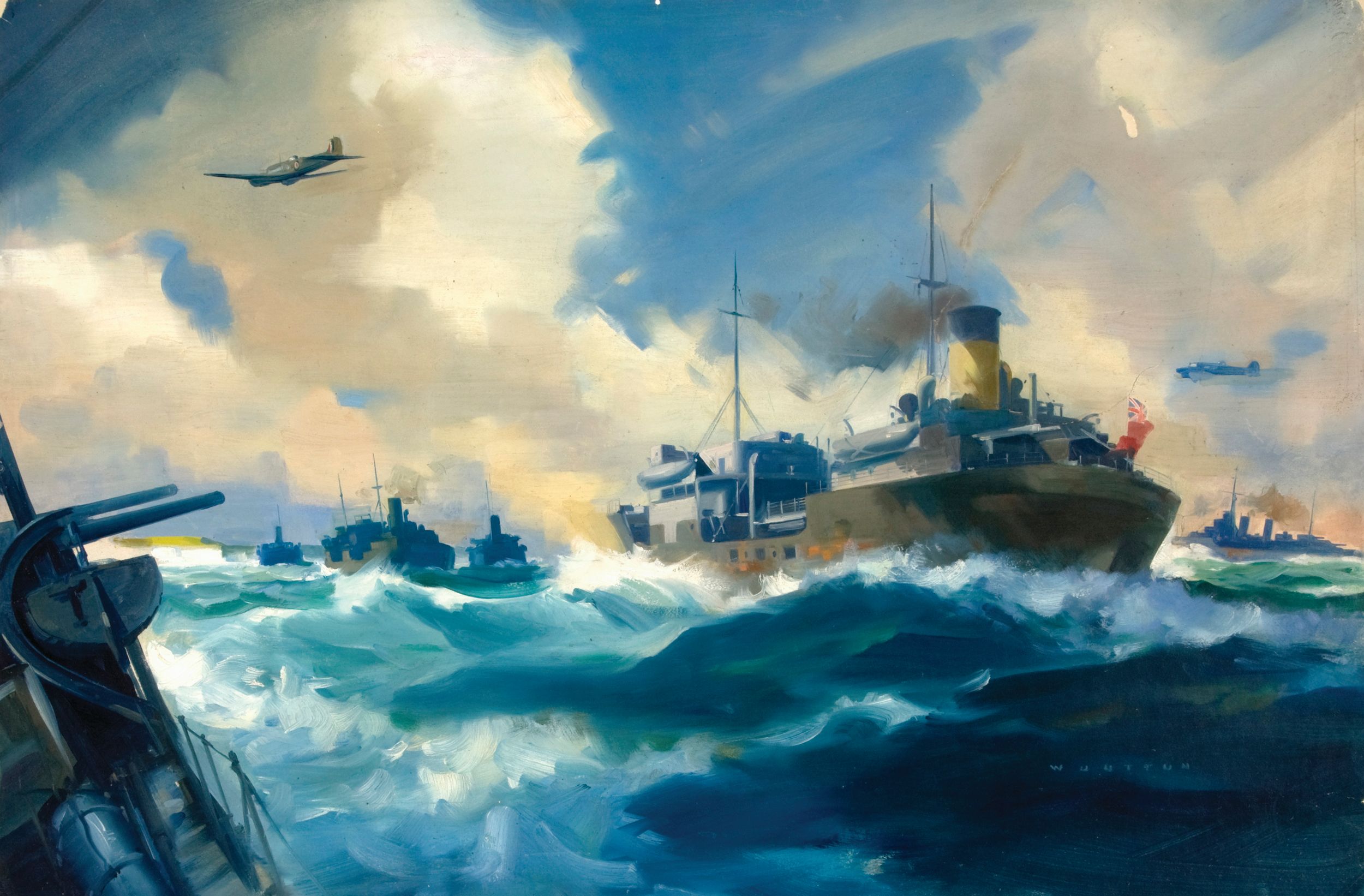
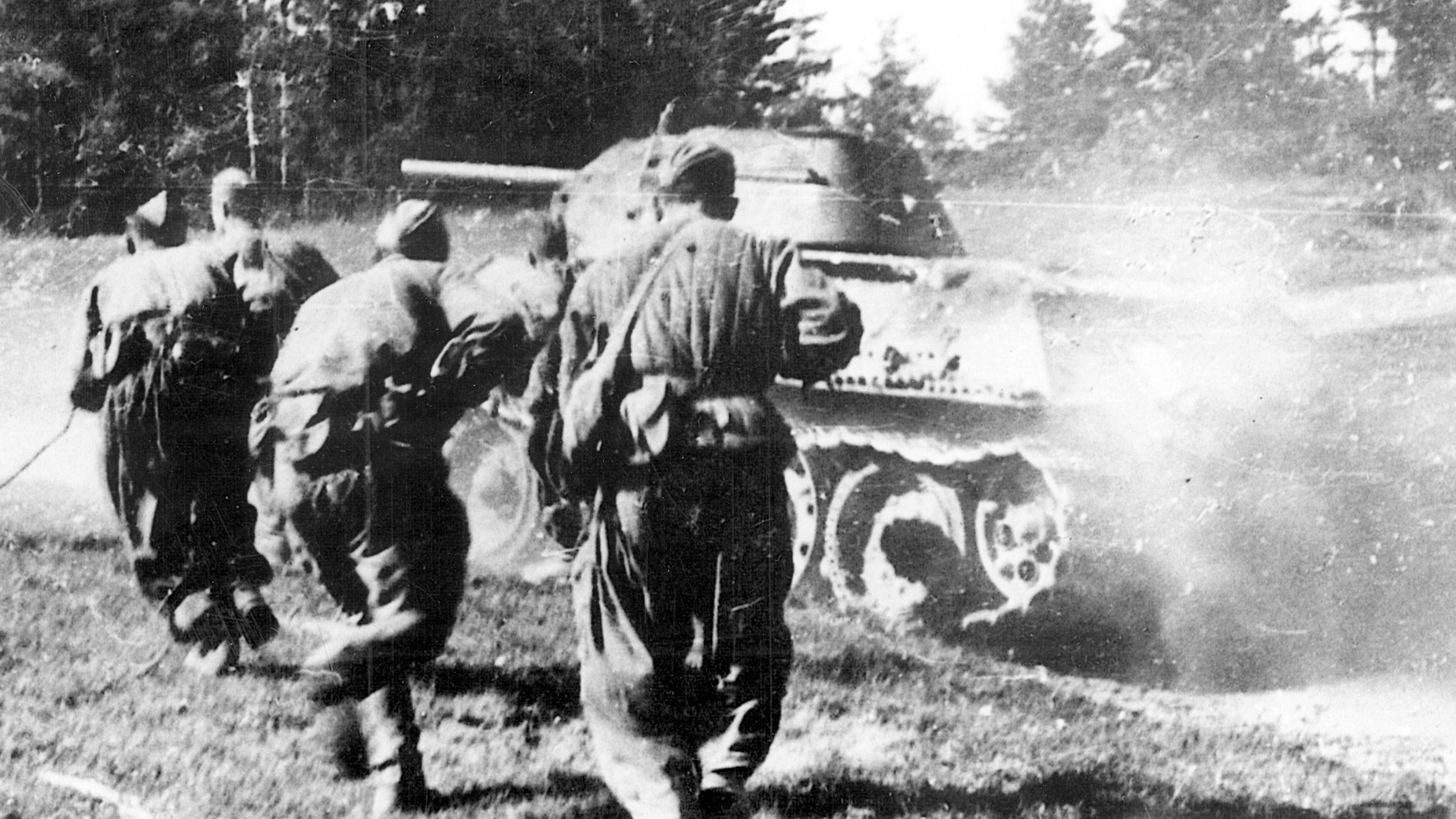
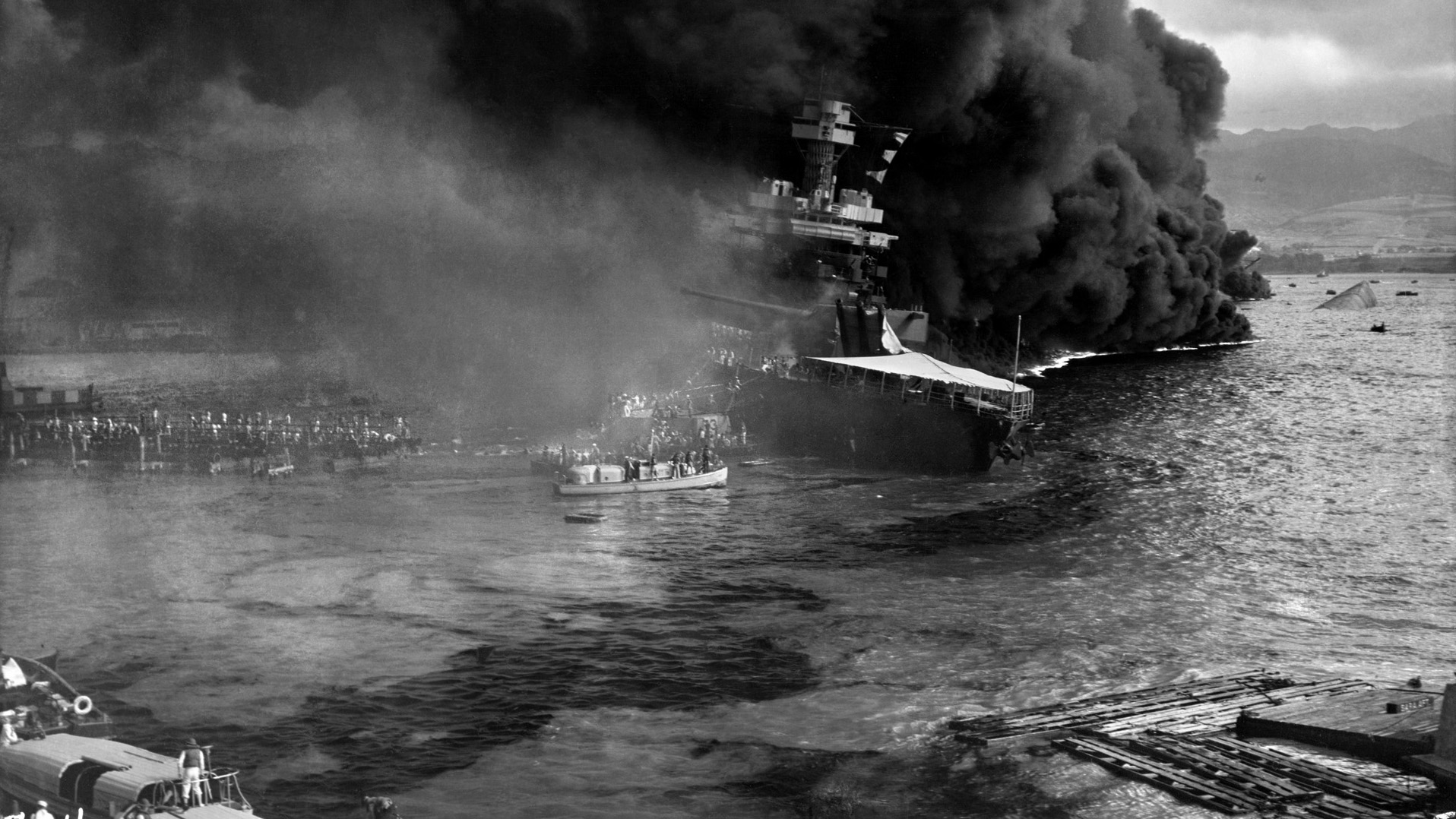
M3 Stuart not italian.